A One-Minute Look at the Charm of Ming-Style Hanfu
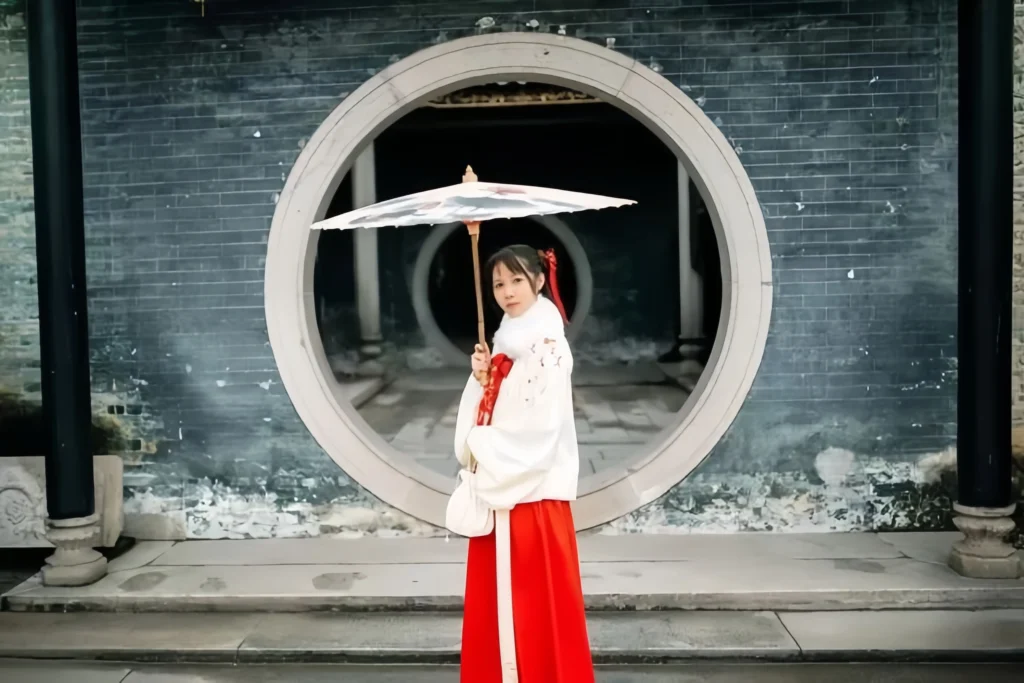
Discover the grandeur of Ming Dynasty Hanfu (明朝汉服), the last Han-ruled imperial fashion that reshaped traditional Chinese clothing for 276 years. Blending Zhou, Han, Tang, and Song aesthetics, Ming attire pioneered revolutionary designs like stand collars and decorative buttons – features that still inspire global Hanfu styles today.

In the mid-to-late period, unique styles like stand collars emerged, along with heavy use of buttons on visible parts of garments—features unseen in earlier dynasties. These were gradually banned during the Qing dynasty, though some styles and traits survived. Modern ethnic clothing from the Korean, Ryukyu, and Jing communities (Hanbok, Ryuso, Viet attire) still shows Ming influence.
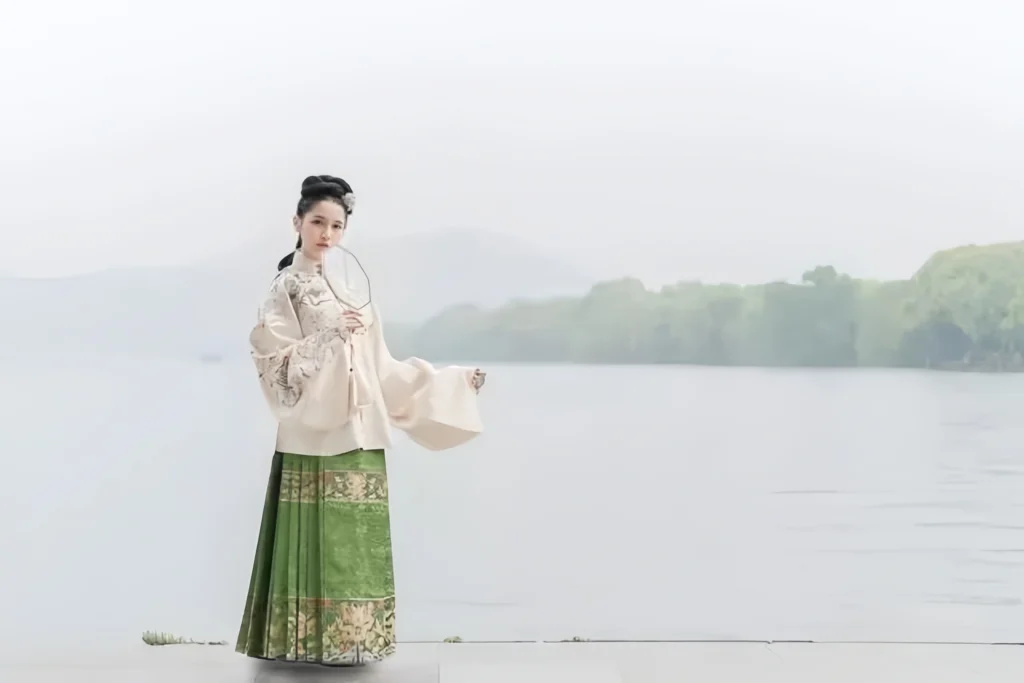
Compared to Tang-style clothing, Ming attire flipped the skirt-to-top ratio. It shifted from short tops and long skirts to longer tops and shorter exposed skirts. Collars evolved from Song’s front-tie designs to mostly round collars.
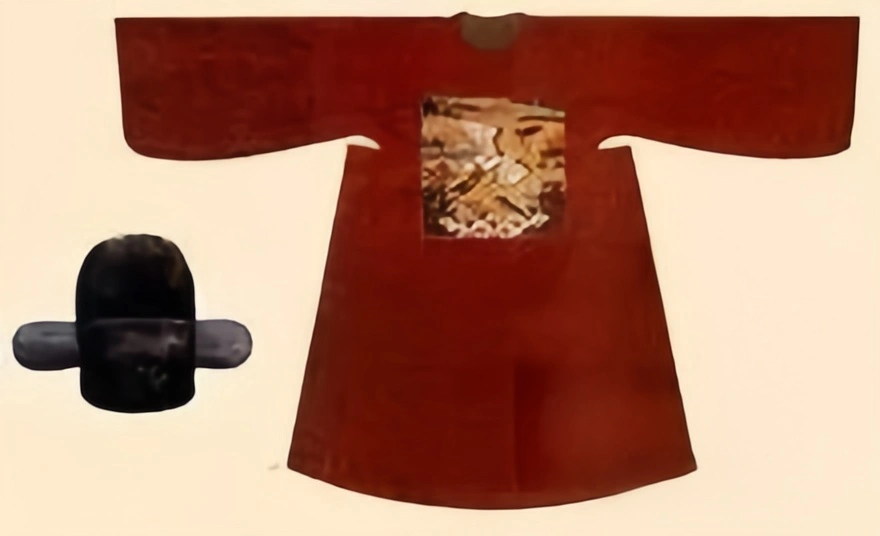
Ming women’s tops were three-foot-long narrow-sleeve designs with two-to-three-inch exposed skirts, known as “flower-crown skirt jackets with round collars and wide sleeves.”
In Yangzhou, a new trend featured tops 28 inches long with 12-inch-wide sleeves, edged with embroidered or fur (mink/fox) cuffs in winter. Early Ming skirts favored light colors; by the Chongzhen era, white skirts were promoted, with one-to-two-inch embroidered edges. Skirts started with six panels in early Ming, expanding to eight or ten by the end, with popular fine or large pleats.
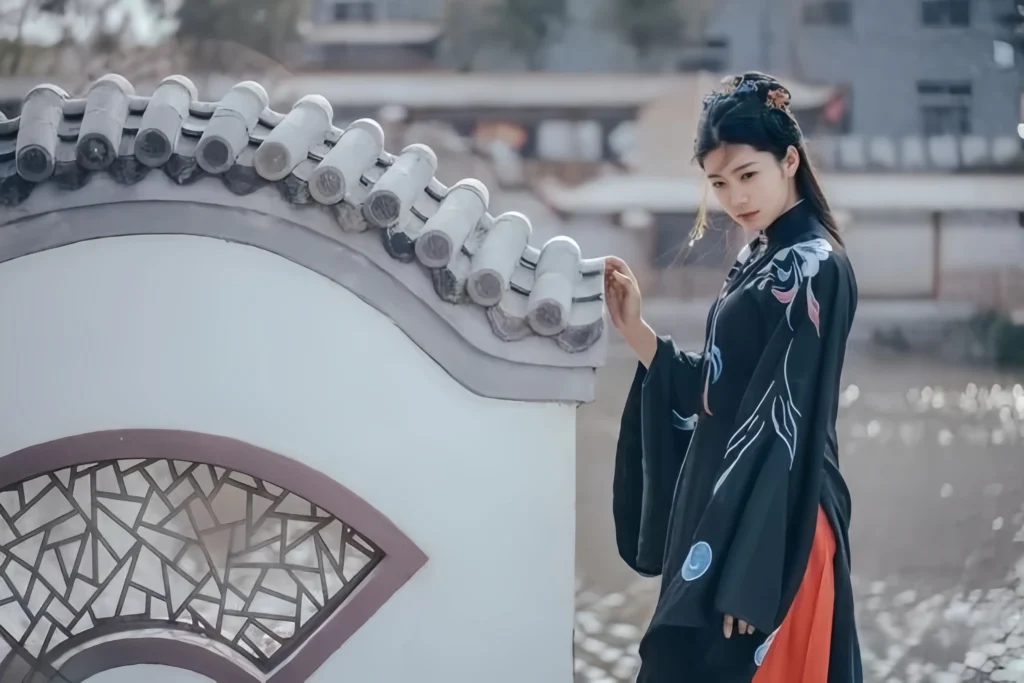
Pleat decorations were a big deal. The color-stripe skirt used different colored satin strips, each embroidered with flower and bird patterns, edged with gold thread to form independent bands. Multiple strips tied at the waist created a flowing “phoenix-tail skirt.”
Others folded whole satin pieces into fine pleats, called hundred-pleat skirts. A 24-pleat skirt was dubbed the “jade skirt.”
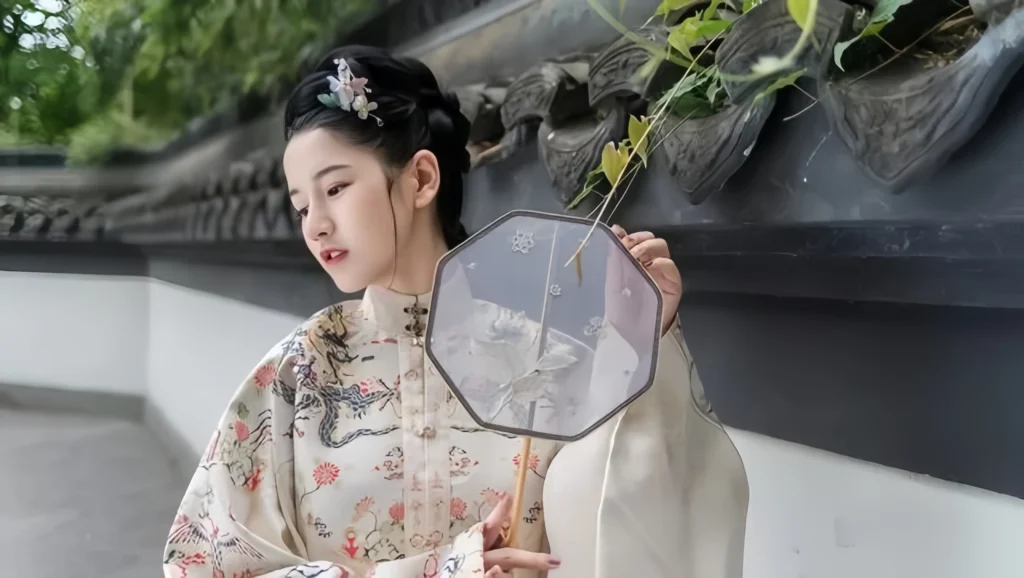
The Ming top-and-skirt look differed from Tang and Song skirt-shirts. Women often added a short waist skirt over the main skirt for mobility, a style also loved by maids. Top collars varied, including cross-collars, square collars, and stand collars.

Skirt colors started light with subtle patterns. By early Chongzhen, they turned mostly plain white, with embroidery limited to a one-to-two-inch floral border at the hem. Early skirts had six panels, echoing the line “skirt drags six widths of Xiang River water.”
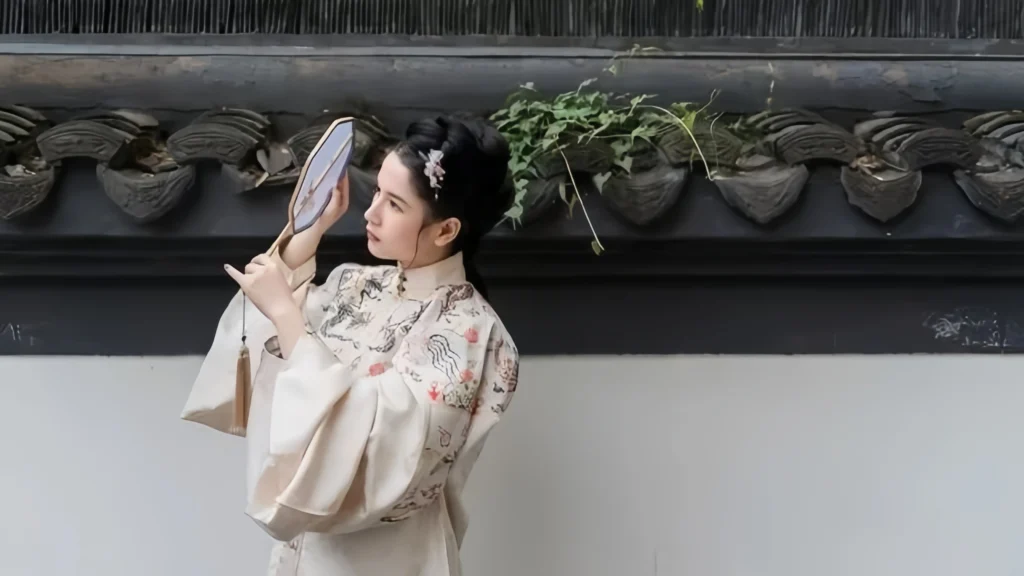
By late Ming, skirts grew to eight panels with dozens of fine waist pleats that rippled like water. Decoration became elaborate, with skirts reaching ten panels, dense pleats in various colors for a soft, elegant look. A breeze made them shimmer like moonlight, earning the name “moonlight skirt.” Other styles included phoenix-tail skirts with satin strips embroidered with flowers and gold edges, and hundred-pleat skirts from finely folded fabric.

Ming-style Hanfu remains a favorite among enthusiasts. Its high-end, majestic vibe shines, especially with gold-woven Mamian skirts that exude grandeur. Far from fading into history, the Mamian skirt blends with modern fashion, revealing a fresh beauty through creative twists.
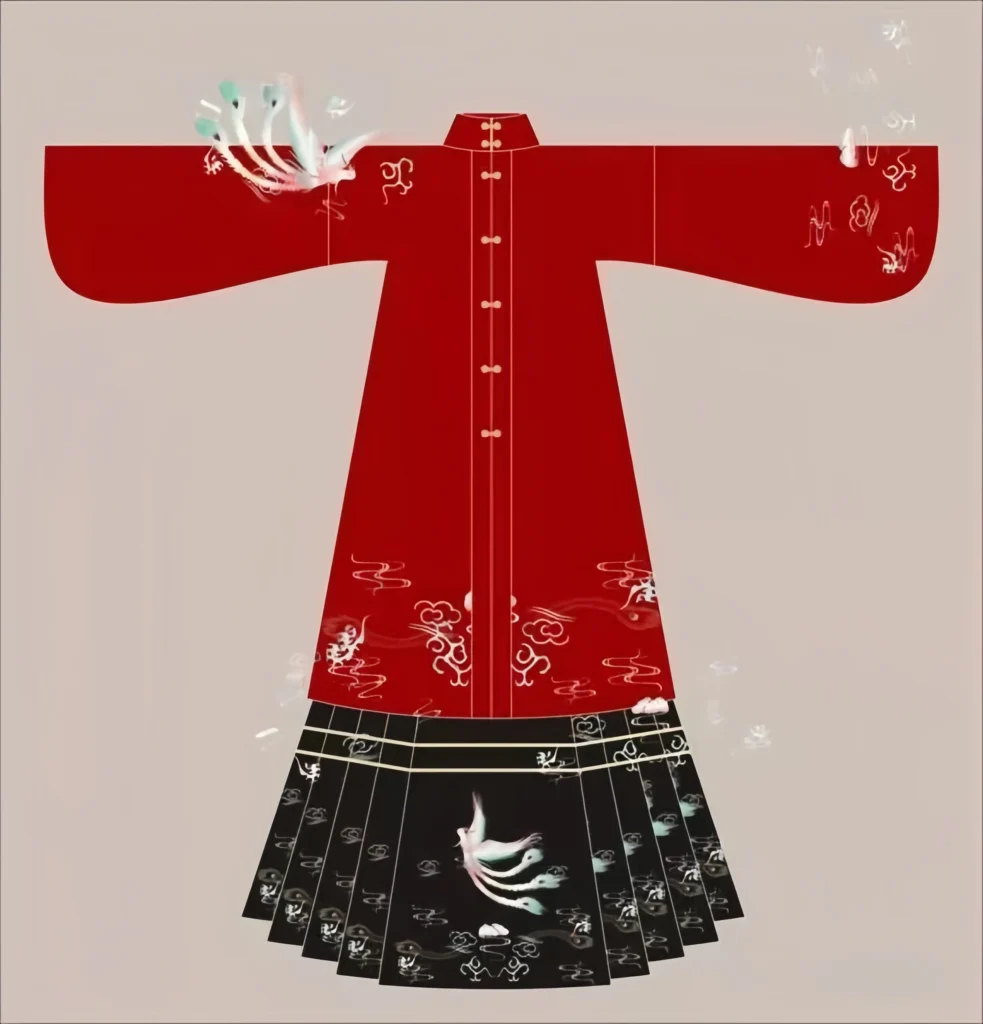
Why Modern Hanfu Loves Ming Dynasty Hanfu
Today’s Ming Dynasty Hanfu revival thrives through:
- Mamian skirt’s luxury reinterpretations
- Stand collars in haute couture
- Pleat techniques in sustainable fashion
- Cultural festivals celebrating Ming silhouettes
Conclusion
From imperial courts to global runways, Ming Dynasty Hanfu remains a pinnacle of traditional Chinese clothing. Its 8-10 panel skirts, gold-woven Mamian designs, and layered silhouettes continue inspiring Hanfu styles – blending historical majesty with modern innovation for new generations of enthusiasts.
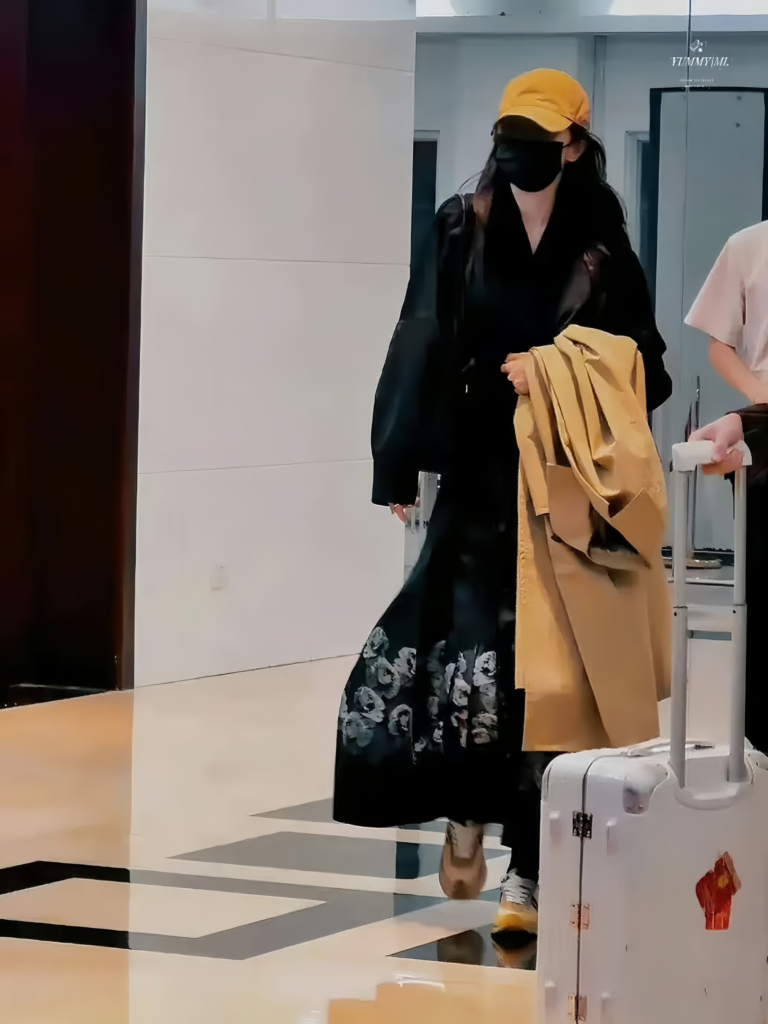

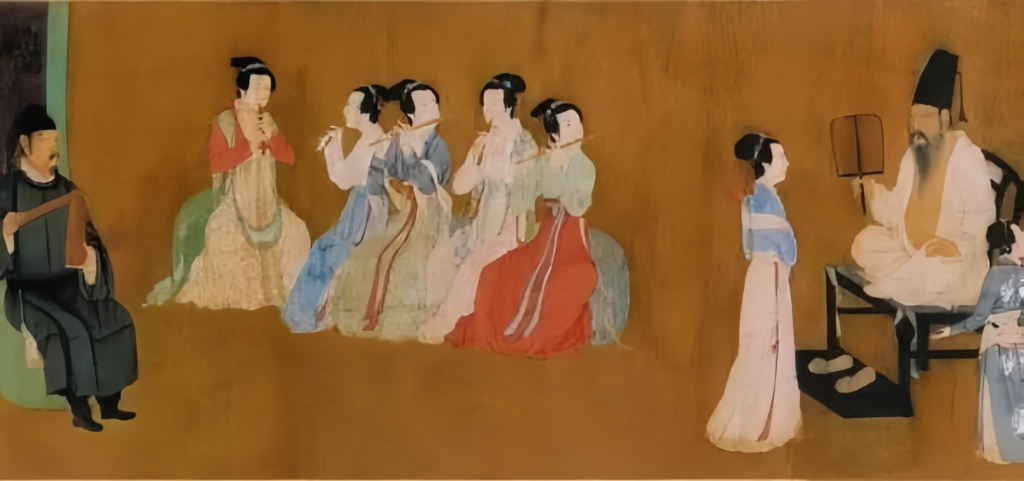
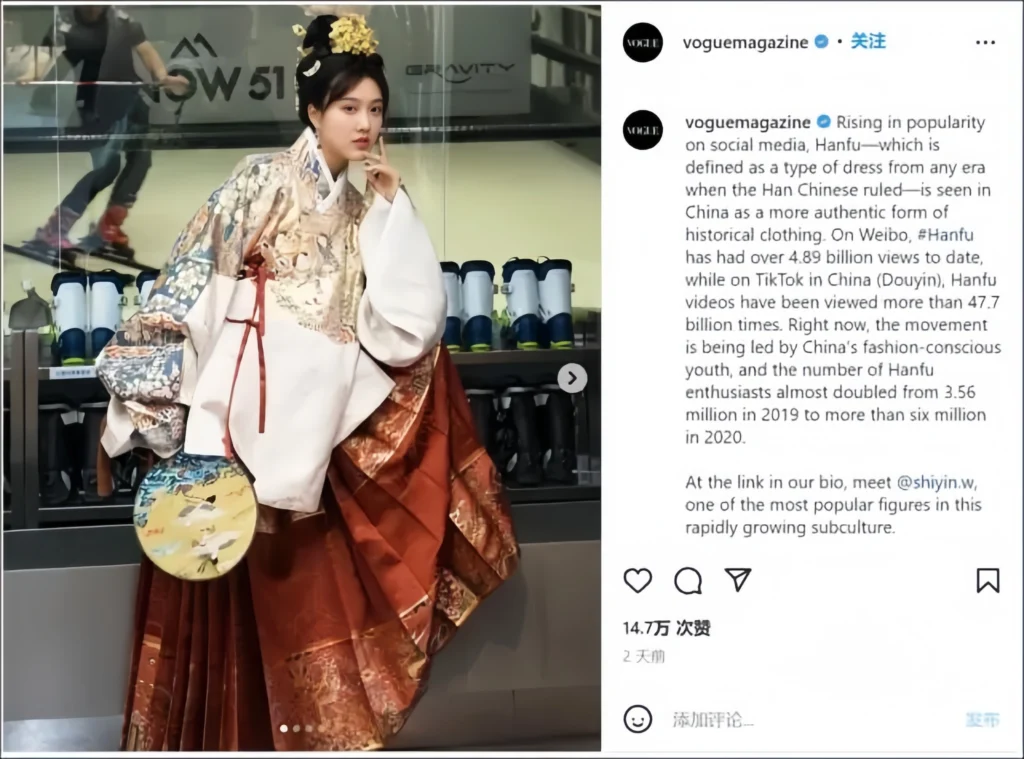

Responses